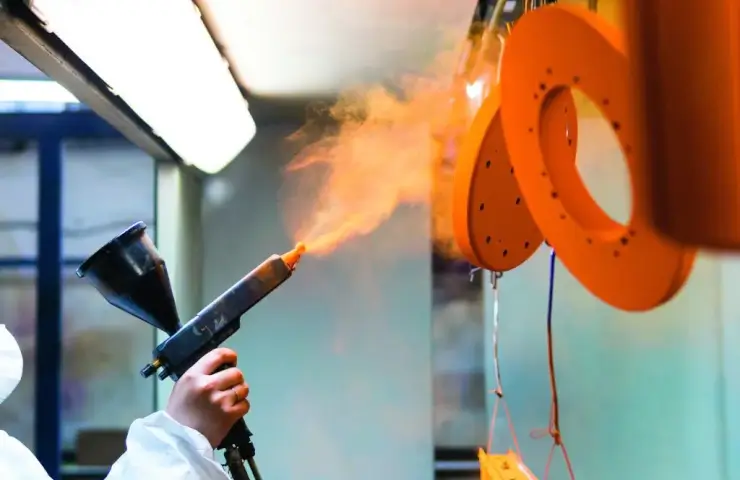Unlike classic paints and varnishes, the polymer analogue has its own advantages. Metallic powder paint can resist negative effects for a long time operating factors. Significantly cheaper as an alternative to corrosion protection. Has an attractive appearance.
Main areas of use
In a relatively short period of time, powder paint has found a wide scope in practice. It adheres well to metal surfaces. Does not need an additional layer of protection, and can retain its original properties for decades. The main areas of use include:
- Decorative products made of polymer and wood.
- Protecting playgrounds from corrosion.
- Additional decorative layer on window frames.
- Electrical products, including hand tools.
- Individual vehicle components are also powder coated.
Almost any metal part, regardless of the physical size and thickness of the metal, can hold powder paint. Since the material is completely harmless to humans, many modern household appliances are coated with this alternative coating.
Technological process of application
Since the material differs in its properties from the usual flowing paints and varnishes, it is necessary to follow a certain technology for its application. If you do not violate the process, the result will be strong enough, without any marriage. The main stages are the following steps:
- preparing a part or a whole batch for painting;
- applying a polymeric dye in an even layer;
- melting of the powder layer, until a uniform coating;
- slow cooling to room temperature.
It is best to clean the surface of the part with a special, degreasing solvent. But, white spirit is also suitable for this purpose. If the part is heavily soiled, including traces of corrosion, sandblasting is necessary. The polymer can be applied industrially, in a special chamber, or with a hand tool in compliance with safety regulations.





